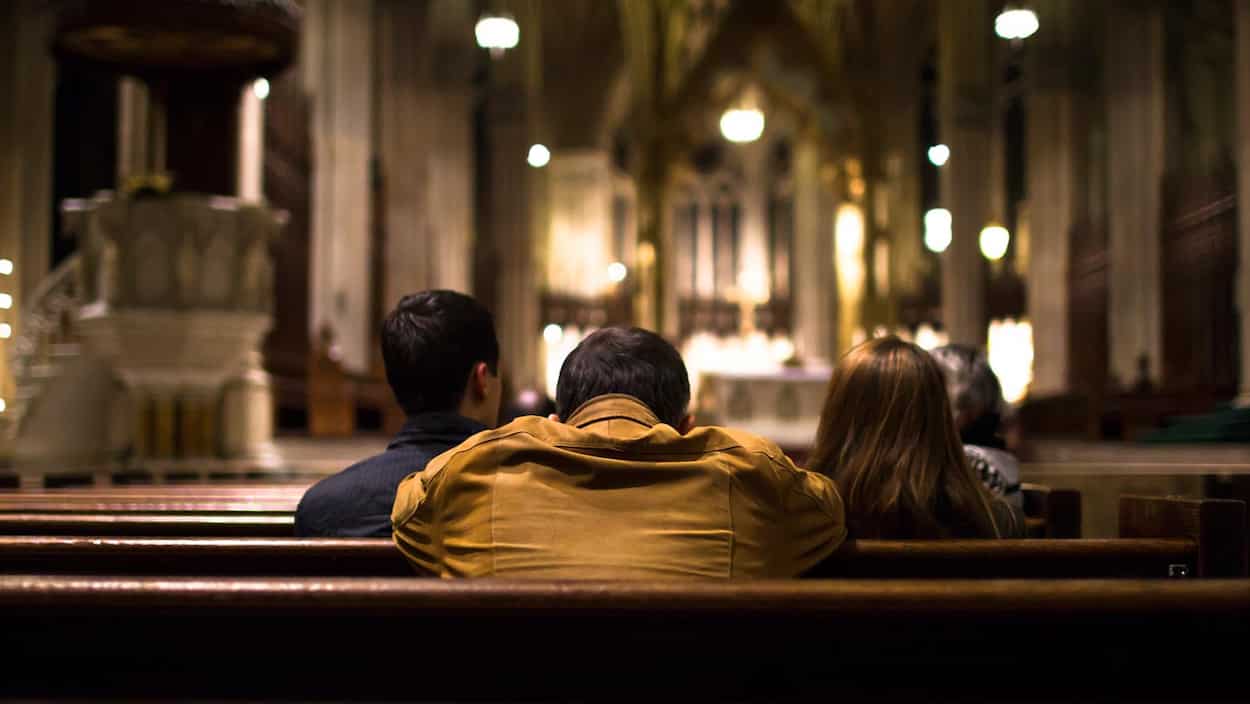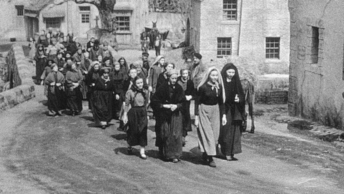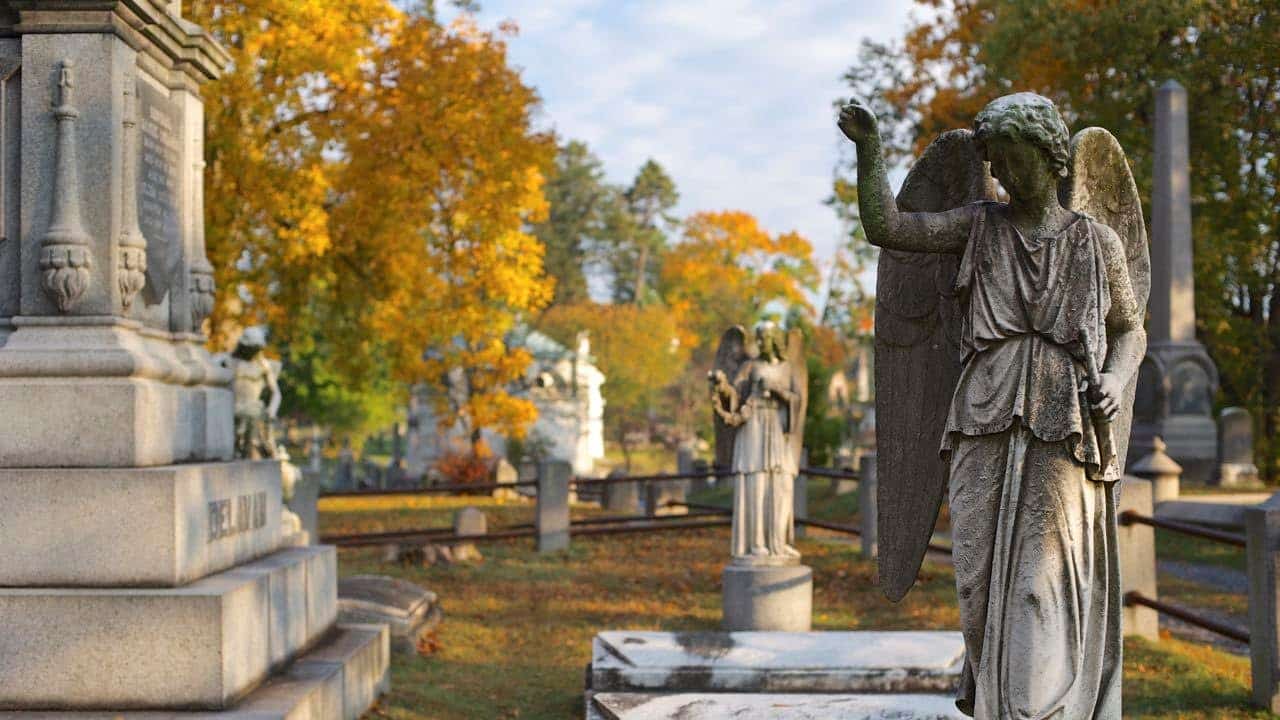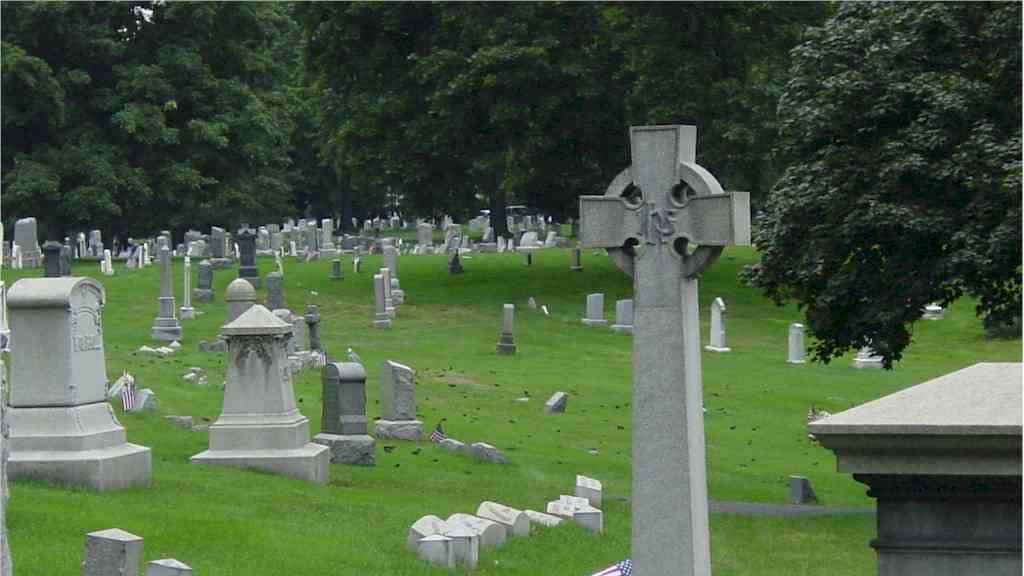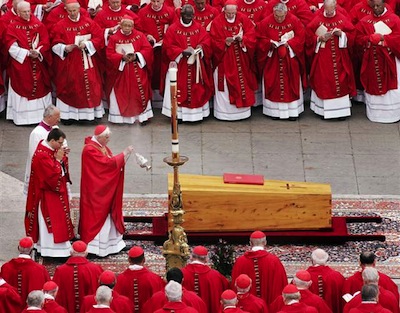
An elderly couple, Lucille and Bernie, were my next-door neighbors for over twenty-five years. They were practicing Catholics who attended Mass each week until Lucille’s ailments severely limited her ability to walk and to take care of herself. Bernie was more mobile, and for several months he tried valiantly to take care of her by himself. But the task proved too difficult, and eventually he had to turn to family and then hospice to see to her needs. Lucille died at home last September.
When I arrived at the church for Lucille’s funeral Mass, I was surprised to find no casket in the vestibule. Instead, her husband sat in a chair in front of a table, upon which was the couple’s wedding photo. Obviously, she had been cremated (The Order of Christian Funerals, #418, notes that “when the choice has been made to cremate a body, it is recommended that the cremation take place after the Funeral Liturgy”). I expressed my condolences to Bernie and his children and then entered the sanctuary and waited for the Mass to begin.
In front of the altar, where a casket usually is stationed, there was a small pedestal with a wooden box (not an urn) containing her ashes. Before the Mass began, the family entered the sanctuary, and the wedding photo was placed upon the pedestal. The Mass was said with dignity, but I somehow felt that the lack of a body in a casket removed some of the normal solemnity and stark reality that should be present during the funeral rite.
A week later, Bernie fell and broke his hip. He deteriorated quickly, and in a couple of months, he, too, was under hospice care. When he died, the family informed me that there would be a memorial service for him at a local mausoleum. Here was a man who had attended Mass almost daily and was a long-serving usher in his church. Now there would not be a Mass, just a “service,” whatever that meant. I was dubious, but decided to attend anyway.
The mausoleum was a large round structure with an open area in the middle for family and friends to gather before interment. Rows of metal chairs stretched from one wall to the other. In the front of the chairs was a small table with the aforementioned wedding photo on display, an American flag folded in a triangular manner (Bernie was a WW II veteran), and a wooden box. It was obvious that Bernie had been cremated, also. And just before the service began, a member of the family removed a plastic bag from a metal container and placed what was left of Bernie in the wooden box.
A Catholic deacon was then introduced, and he offered prayers for Bernie’s soul and spoke briefly about the Church’s teaching on life, death, and the Resurrection. Perhaps the deacon was inexperienced, for he often struggled to find the proper prayers in his funeral rite book, and his delivery was, to be charitable, bland. During the fifteen-minute service, family and guests stirred uneasily in the metal chairs and seemed disinterested in the whole process.
But once the deacon had finished, the attendees suddenly changed their behavior. Six veterans made up an honor guard. Two at a time walked smartly from the back of the mausoleum, stopped in front of Bernie’s ashes, and saluted sharply. Then two active-duty soldiers who had been standing off to the side, approached the table. Wearing immaculate white gloves, they stopped in front of the table and saluted in unison. One of them slowly lifted the American flag, held it in front of his chest, and turned toward his colleague. While he held it firmly, she slowly unfolded the flag as she stepped backward. When the flag was completely unfolded, they reversed the process, and with great dignity restored it to the original triangular form. Great care was taken to make sure that the folding procedure was without flaw. Then one of the soldiers solemnly approached a family member, bent down on one knee, and thanked the member for Bernie’s service to the nation.
During all of this military pomp, the attendees were as quiet as those buried in the walls. There was no squeaking of chairs, no unnecessary fidgeting. Their attention was riveted on the flag ceremony. I couldn’t help but wonder why the military aspect of the service easily “trumped” the spiritual aspect. I think I know the answer.
There was no funeral Mass in a church. The mausoleum was cold and stark. As I said earlier, the deacon seemed ill-prepared and unsure of himself. He had an opportunity to challenge the attendees to consider how they were living their lives and the reality of a final judgment. But that never happened. In all fairness, the lack of a casket deprived him of a visual reminder of our final end on this earth. The small wooden box on the table was, if not invisible, at least incapable of touching the soul.
On the other hand, the military ceremony was solemn and serious. When unfolded, the flag was large and easily visible, and few Americans can ignore its symbolism. Both the unfolding and refolding of the flag was performed with precision. Every move was choreographed to indicate to the viewer that this was a special moment, a moment that demanded quiet attention and respect. And that’s exactly what the ceremony received.
I think there is a lesson here for all priests and deacons: Take the Mass and the Sacraments seriously. Perform the rites of the Church with dignity. Let every action and every word reflect the wonder of what is taking place as Christ administers to his people through you. Do this, and I am convinced that you will see an almost miraculous change in how the people see, and respond to, their Catholic faith.
Several years ago, I attended my grandnephew’s baptism. The church was packed with many babies and relatives. Sadly, there was no sense that the building was supposed to be a place of prayer and silence. The noise level equaled that of a gymnasium before a big basketball game. At the appointed time for the baptism rite to begin, the pastor walked out of the sacristy and asked, “Is everybody ready to rock n’ roll?”
Anyone care to guess how dignified that ceremony was?

